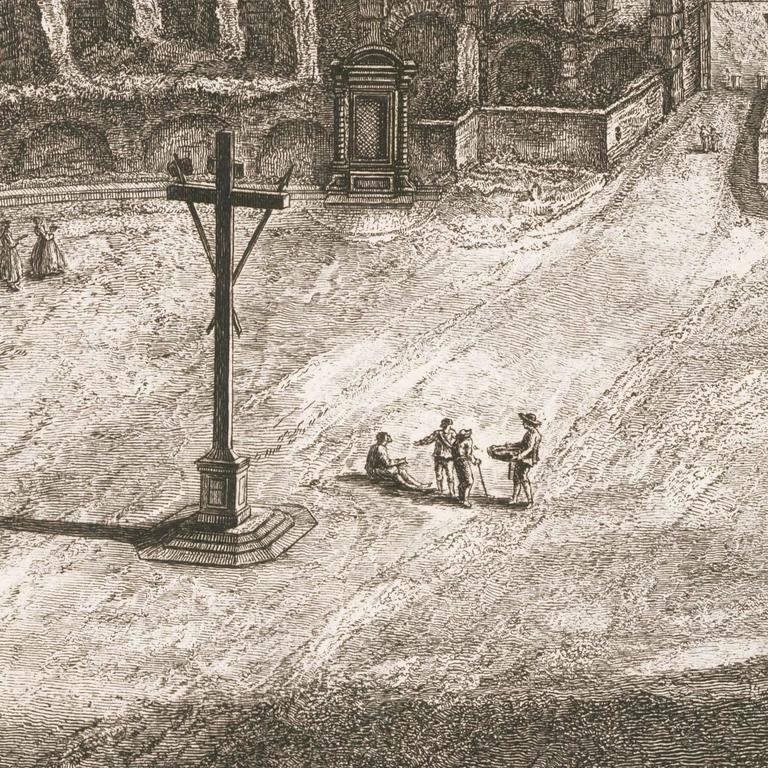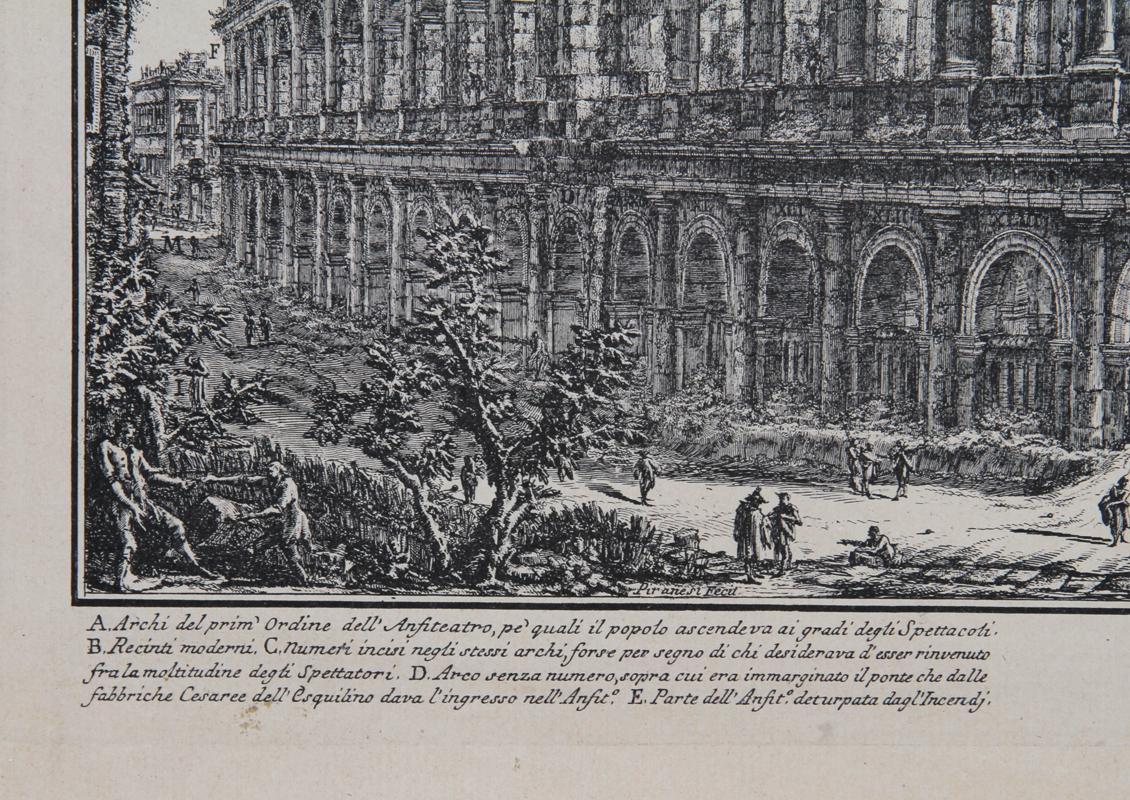
He compiled the first overview of frequently occurring watermarks in the paper that Piranesi used. The American art historian Andrew Robison is a pioneer in the field of watermark research. Watermark research can be used to provide insight into Piranesi’s working practices, and it is important for dating the prints as well as for distinguishing them from reprints. This is why there was a special focus on watermarks during the research for the online collection catalogue. It is often tricky to distinguish these reprints from the prints made by the artist himself, not least because there is still considerable uncertainty about the paper that Piranesi used.
#PIRANESI PRINTS COLOSSEUM SERIES#
For example, his son Francesco (1758-1810), with whom he had worked during his lifetime, republished some series with his own additions.

This is due to Piranesi's tremendous versatility, huge output and the large number of reprints made since his death, even into the twentieth century. 5 Despite the many investigations, discoveries such as new states, are still being made and dates are being changed. 4 The substantial catalogue of the Graphische Sammlung in the Staatsgalerie Stuttgart, the only museum collection catalogue of Piranesi prints so far (1999), is worthy of mention. 3 Many catalogues of his work have been compiled, a few of which have served as guides for further investigation.

Since then, the artist has been the subject of much research. An interactive map of Rome has been developed for this exhibition, showing points referring to places (churches and monuments) that Piranesi recorded in his Vedute di Roma series.Ī catalogue raisonné appeared fourteen years after Piranesi died. The publication of this collection catalogue was timed to coincide with an exhibition being staged in Depot Boijmans Van Beuningen from 14 November 2022 to 5 March 2023. As you enter, your eyes are drawn to the maze of staircases zig-zagging all the way to the top of the building. The collection is held in Depot Boijmans Van Beuningen, where Piranesi’s work appears to have become reality. The scope and quality of the collection were the stimulus to develop an online collection catalogue. The Rotterdam Piranesi Collection has long been well known for its superior quality and the number of early impressions and copies. The collection is not complete, but it is the most comprehensive museum collection in the Netherlands. 2 Museum Boijmans Van Beuningen holds 751 Piranesi prints, many of which are in series or bound into books. At the end of his life there were three hundred unbound copies in his workshop. Altogether he created twelve different books of prints.
#PIRANESI PRINTS COLOSSEUM HOW TO#
It was the ideal place to learn how to compile print books. Piranesi lived in Rome, which in the eighteenth century was a hub of book and print publishers. 1 These etchings were published mostly in the form of series or books of prints.


He created over a thousand etchings, which represents an average output of 2.3 prints a month. The Italian artist made a huge number of prints, chiefly during the last thirty years of his life. The story of Piranesi as a maker of books of prints and his world on paper, including watermark research, was at the heart of the project. The research was made possible by a grant from the Mondriaan Fund. This online collection catalogue is the result of a two-year research project into all the prints by Giovanni Battista Piranesi (1720-1778) in the museum’s collection.


 0 kommentar(er)
0 kommentar(er)
